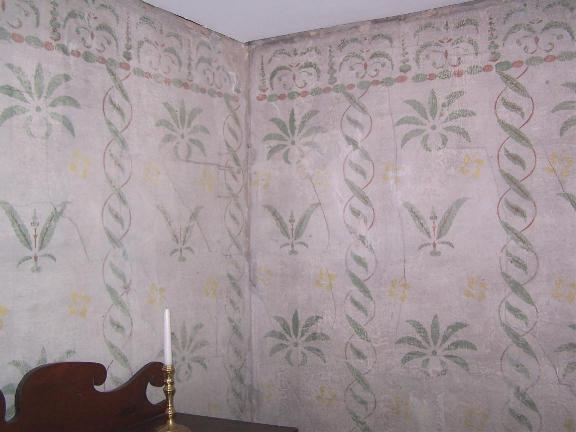
THE TAVERN
The Georgian building was constructed, with the front facing the Mohawk River
and the King's Highway, in 1747 by Christian Nellis, Sr. It had a center hall
and two main rooms on the first floor and a sleeping loft on the second floor.
The cooking fireplace was in the cellar with two others on the first floor.
In the late 1780's, the roof was raised over the original building, creating a second floor.
Around 1815, the Tavern was expanded to the east with a two-story addition. At the same time, the exterior of the building was "Federalized", the new entryway facing the new Mohawk Turnpike (present NYS Rt 5) was added. At some later date, the South entrance was closed. A second north entrance was added in the "Public Room", as the east room was called.
At about the same time, early American stencils were added to the walls on both floors of the east wing. The designs reflect the patterns and colors used by Moses Eaton and others.

(This picture of stencils in upstairs bedroom)
There are three kinds of lath represented in the building: accordion (split),
vertical sawn and circular sawn. These details and nail heads help to date construction
and repairs.
As you enter the Tavern from the Route 5 side,
you will be using the North Door, rebuilt in 1993.
This is patterned from an earlier entrance as shown in
a late 1800's photo.
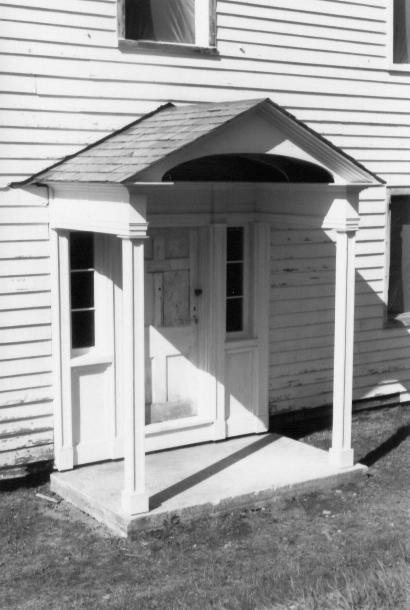
CENTRAL HALLWAY
In the main entrance hall, you will see the
new south door and windows,
created in 2003 with a grant from Jim and Suzanne Nellis.
There are two short, wide "Georgian" doorways on either side of the
hallway, one with a door. Note the detailed and elegant moldings. There are
two tall, narrow "Federal" doorways. Note the contrast of the simple
half-round bead molding with that of the earlier period.
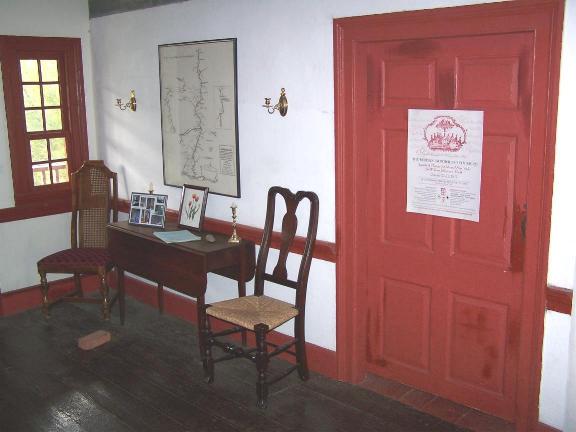
The
turned balusters on the staircase are also from the Georgian period.
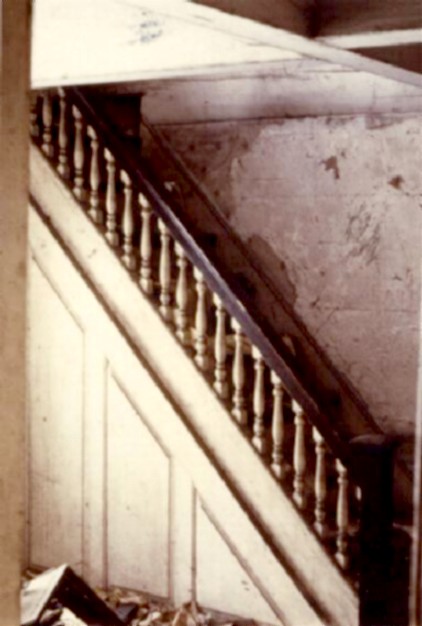
Staircase as restored c. 2010 Staircase as found c. 1970
WEST ROOM
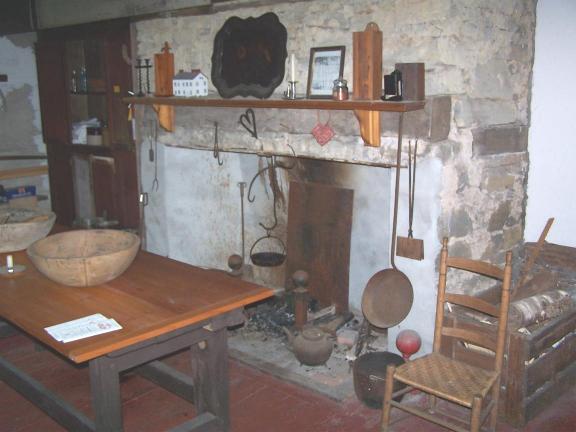
This room may have been the site of the general store, but more likely the dining
room.
The limestone fireplace, of intermediate depth was probably used to keep cooked
food warm
after it was brought up from the cellar kitchen or a kitchen in an adjoining
west building.
The west building would also have housed the store.
To the left of the fireplace is the 18th century,
floor to ceiling, red Getman Family cupboard
which has been restored.
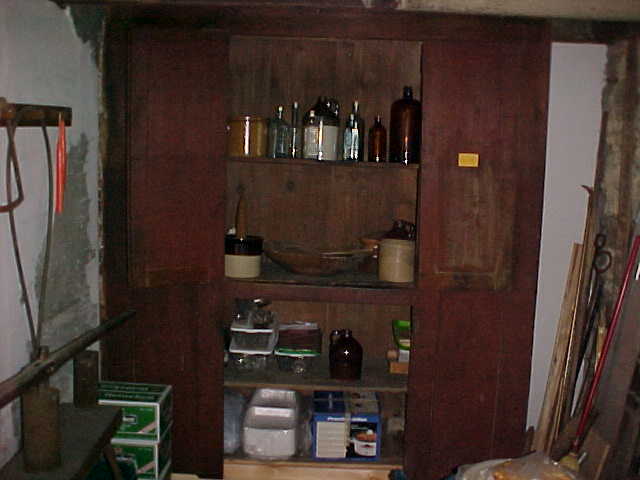
On the right, the cantback cherry cupboard, c.1780, came from the line of another son of Christian, Sr., Hans Jurg Nellis (1732-1792) of Herkimer, NY.
Along the north wall you can view the Wattle and Daub construction, not used in the Mohawk Valley much after 1750, and the split-board lathe found upstairs in the 18th Century portions of the Tavern.
THE TAVERN ROOM
To the left of the entrance hall is the Tavern Room which is located directly above the original first room of the building (in the cellar). The fireplace here is at half-depth, used to warm the patrons as they met, talked, and enjoyed a drink after a long day's travel.
This "Tavern Room" contained 3 sections; the bar,
bar room and a bedroom.
Note the 26-foot clear span framing of the beams.
THE PUBLIC ROOM (EAST ROOM)
Beyond the Tavern Room, you enter the East Room,
or Public Room,
which was added to the Tavern around 1810.
The walls of the 3 original rooms here (stove,
bedroom, closet) were left bare plaster when constructed.
In the mid-1820's, the walls were stenciled in the "New England" style
on bare plaster.
In the early 1850's, the interior partitions
were removed, the walls and ceiling were patched,
and the room was papered as one large room.
During modern reconstruction, the wallpaper
was removed and stenciling was uncovered.
An early door on the north side has been removed.
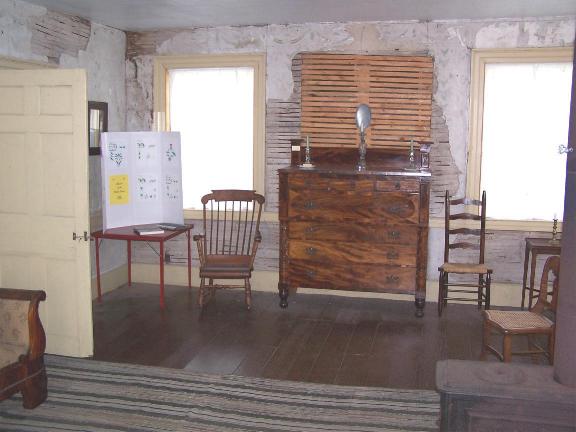
Recently, the ceiling was replastered,
Then the walls were covered with plaster board over the stencilled plaster walls,
once again hiding the original stencils.
Nearly 200 years later, we celebrated the
completion of the restoration of the first-floor stencils
in September, 2016.
The East Room fireplace is constructed of brick.
We will be adding more photos to this page as they become available.
(This page was updated on November 27, 2017)
Click "HERE" to return to the Main Page.